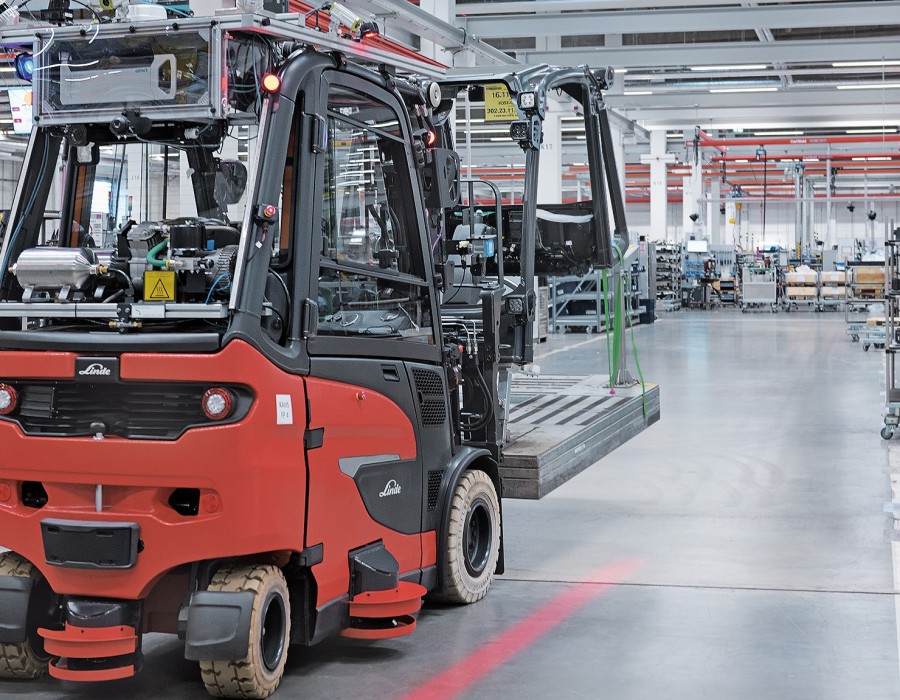Introduction
The evolution of smart warehousing has brought about a new era in supply chain management. Automation, real-time data access, and intelligent material handling systems are now key components of modern warehouse operations. Among the technologies driving this transformation, autonomous forklifts have emerged as central tools. The Autonomous Forklift Market is witnessing increasing demand as businesses look for effective ways to streamline logistics, reduce labor-intensive tasks, and elevate overall warehouse performance.
Understanding Smart Warehousing
Smart warehouses are equipped with connected systems and intelligent technologies designed to improve visibility, efficiency, and decision-making. These environments leverage automation and analytics to optimize every aspect of warehouse operations—from inventory tracking to order fulfillment.
Autonomous forklifts are perfectly aligned with the smart warehouse concept. Their ability to operate independently, interact with digital systems, and make decisions in real time makes them indispensable in such environments. As companies transition to smarter operations, autonomous forklifts play a critical role in bringing these visions to life.
Real-Time Inventory Management
Autonomous forklifts contribute significantly to real-time inventory management. Equipped with advanced sensors and tracking capabilities, these machines update inventory systems automatically as they move goods throughout the warehouse. This helps maintain accurate stock levels and minimizes the risk of inventory discrepancies.
By reducing manual scanning and input, autonomous forklifts allow staff to focus on exception management and value-added tasks. Their integration with warehouse management software ensures that every movement is recorded and inventory locations remain current at all times.
Accelerating Order Fulfillment
In smart warehouses, order fulfillment speed is essential. Autonomous forklifts help meet this need by picking and transporting items quickly and consistently. They can retrieve products from storage zones and deliver them to packing stations with minimal human intervention.
With their ability to work continuously and follow optimal paths, these machines contribute to faster processing of orders and reduced lead times. This is particularly beneficial in e-commerce and retail industries where timely delivery is critical for customer satisfaction.
Improving Space Utilization
A key advantage of autonomous forklifts is their precision in navigating narrow aisles and high-density storage environments. In smart warehouses, where maximizing space is a top priority, these forklifts allow for tighter layouts without compromising operational efficiency.
They operate smoothly in confined spaces, accessing storage areas that may be difficult for traditional vehicles. This ability to maneuver efficiently leads to better use of available floor space and supports increased storage capacity within the same facility footprint.
Enhancing Data-Driven Decision Making
Smart warehouses rely on data to optimize performance. Autonomous forklifts are valuable data sources, continuously generating information about travel paths, load handling, task completion, and operational patterns. This data can be analyzed to identify inefficiencies, optimize routes, and improve overall warehouse design.
When connected to analytics platforms, autonomous forklifts help warehouse managers make informed decisions that enhance productivity, reduce energy usage, and balance workloads more effectively. Their role extends beyond material handling—they are integral to strategic warehouse planning.
Supporting Scalable Operations
One of the strengths of smart warehousing is its scalability. As business needs grow, warehouses must be able to expand capacity without major disruptions. Autonomous forklifts are inherently scalable solutions. New units can be added as demand increases, and they can be reprogrammed to handle evolving tasks or workflows.
This adaptability allows businesses to respond quickly to seasonal peaks or market shifts without the need for extensive restructuring. The growing use of autonomous forklifts is a testament to their ability to support flexible and scalable warehousing.
Reducing Human Error
Automation in smart warehouses also aims to minimize errors. Autonomous forklifts reduce the likelihood of damage, misplaced inventory, or misdirected shipments. Their operations are governed by programmed instructions and real-time feedback, which ensures consistency and accuracy.
This leads to fewer mistakes, improved order accuracy, and better customer service. In high-volume environments, even small reductions in error rates can have a significant positive impact on profitability and efficiency.
Strengthening Safety Standards
Safety remains a top priority in warehouse operations. Autonomous forklifts are equipped with advanced safety features such as obstacle detection, automatic braking, and controlled speed adjustments. These capabilities contribute to a safer workplace and minimize incidents.
In smart warehouses where human and machine interactions are common, autonomous forklifts provide an additional layer of operational safety. Their predictable behavior and built-in safeguards enhance trust and coordination between workers and machines.
Conclusion
The shift toward smart warehousing is reshaping the logistics industry, and autonomous forklifts are playing a vital role in this transformation. Their ability to deliver consistent performance, support data-driven operations, and adapt to evolving needs positions them as a key asset in next-generation warehouses. As businesses continue to embrace automation and intelligent systems, the Autonomous Forklift Market is set to thrive. These machines are not only improving the efficiency of material handling—they are driving the future of warehouse innovation.





Comments